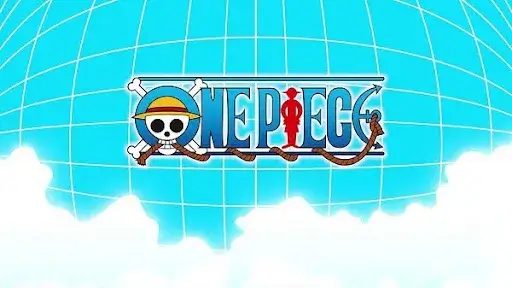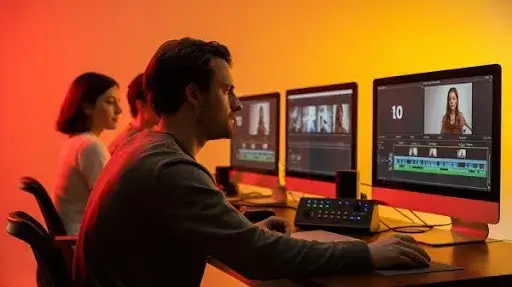Few anime carry the kind of weight that One Piece does, not just in story but in how it looks and feels. For more than 25 years, audiences have seen Monkey D. Luffy pursue his dreams. However, there have been other journeys, more quietly observed, the transformation of the One Piece animation.
One Piece has expanded from its rough, hand-drawn animations of the 1990s to the animation masterpieces expected of 2025. What began as a simple story about pirates has grown into a masterclass in animation. Each Arc has its own tone, animation style, and unique ways of breathing and hitting the audience emotionally.
And this wasn’t random. Every animation style change within One Piece has been a master of its own story. Each step was taken for story purposes, for budgetary reasons, and to shift animations. We experience and appreciate the art of Japanimation through the ever-shifting, trend-setting One Piece.
For 2D animation studios and creative teams looking to better their craft, One Piece stands as a living testament to what consistent, progressive production looks like.
So, let’s unpack the timeline, the One Piece animation evolution, arc by arc, frame by frame.
Significance of One Piece Animation Change
The animation of any long-running anime tells a hidden story to accompany the visuals. It conveys emotion and enhances the impact of each battle, every tear, every silence, and every moment in the story.
In the case of One Piece, its art and animation directly mirror its narrative growth. The early arcs used thicker lines, flat colors, and simple backgrounds, perfect for a young, goofy crew starting their journey. Emotions become actions, and every moment of silence becomes a statement.
Toei Animation’s ability to balance ingenuity with deadlines and budgets is evident in the evolution of One Piece’s art style over the last 20 years. Each of the show’s phases correlated with the technological capabilities of the time, from the present day back to the earliest phases.
This type of analysis isn’t only for devoted One Piece fans. For those in the industry, especially in 2D and 3D animation, One Piece offers lessons in how storytelling drives visual change, how consistency is maintained across hundreds of episodes, and, especially, how to succeed in an industry that thrives on tight scheduling.
The One Piece Animation Evolution Timeline
Before we explain how the animation style on One Piece has changed, we should first look at the arc-by-arc progression of the animation style, since that’s how the fans experienced it. Here’s an overview of the show’s visual epochs and the inventive ideas that drove them.
1. East Blue to Alabasta (Episodes 1–130)
In the anime industry at the time, older episodes needed animation polished, and One Piece episodes from 1999 to the early 2000s had a nostalgic look. The movement was choppy, with plain shading and minimal detail.
Characters often appeared off-model, but the charm was undeniable. The One Piece anime art style shift here wasn’t about sophistication; it was about storytelling purity. Each scene looked like a comic strip in motion.
Strengths:
- Faithful to Oda’s manga tone.
- Nostalgic, emotional simplicity.
Weaknesses:
- Limited animation frames.
- Muted color palette due to older technology.
At this point, no one could’ve predicted how big this show would get. The One Piece animation quality timeline started small, but it was solid.
2. Skypiea to Water 7 (Episodes 131–325)
By the mid-2000s, you could start to see improvements in technology and budget. The line art became clean, and the shading became smoothed out as well. Fights like Luffy vs. Enel introduced faster sequences, and emotional expressions started carrying more weight.
This was the beginning of One Piece animation quality improvement, subtle but essential. The tone matured, and the visuals began catching up.
Strengths:
- Brighter color tones and better consistency.
- Improved character expressions.
Weaknesses:
- Still used too many static frames for intense fights.
Many fans call this the start of the “refined era.” While far from perfect, this phase shaped the modern One Piece animation evolution timeline that we know today.
3. Enies Lobby Arc (Episodes 264–312)
Talk to any One Piece fan, and you will learn that the earliest visual peak of One Piece in animation was Enies Lobby.
Luffy’s and Rob Lucci’s battle did not just change fans’ perception of One Piece. It also influenced how studios view long-form 2D storytelling. It was the first time the show seemed cinematic. Toei Animation invested more time into dynamic fight choreography, intense lighting, and detailed keyframes.
The One Piece animation changes by arc hit a noticeable high here. You could feel every punch, every burst of steam from Gear Second, and every drop of rain in those closing scenes.
Strengths:
- Strong action direction and smooth transitions.
- More dramatic angles and camera motion.
Weaknesses:
- Quality varied between episodes depending on production teams.
Even today, 2D animation studios cite Enies Lobby as a reference for how to blend emotion with motion.
4. Thriller Bark to Marineford (Episodes 337–516)
Here’s where the One Piece animation style change took another leap. Characters became sharper, backgrounds gained more depth, and digital coloring started playing a major role.
The Marineford Arc, in particular, set a benchmark. You could sense Toei Animation’s budget being stretched, but also their ambition. The war scenes looked fuller, the lighting more dramatic, and the sense of chaos truly cinematic.
It was no longer just about keeping up with the story; it was about delivering it like a movie.
Strengths:
- Richer colors and layered effects.
- Greater use of motion graphics and visual depth.
Weaknesses:
- Slight inconsistency during filler episodes.
This was Toei’s “transitional” period, moving from old-school anime style to a modern production setup. Many experts refer to this as the era that solidified Toei’s identity as a top 2D animation studio capable of handling long-running franchises with evolving demands.
5. Post-Timeskip Arcs (Episodes 517–589)
The time skip wasn’t just for the Straw Hats; it was for the animators, too.
The One Piece animation change after the time skip was the most noticeable overhaul yet. Every character had a cleaner, slimmer design. The outlines softened, the backgrounds looked more layered, and battles began to feel slower but more deliberate.
Fish-Man Island and Punk Hazard arcs showcased the new era, but they also exposed the struggles of adapting modern techniques under weekly deadlines. Fans noticed that while visuals looked upgraded, the animation often felt static.
Strengths:
- Polished line art and refined colors.
- New designs reflecting the maturity of characters.
Weaknesses:
- Uneven motion quality due to limited production time.
This is when people started asking, “How much does animation cost?”, because the quality jump made it clear that production was getting more expensive. The balance between art direction and budget became a defining challenge in the One Piece animation evolution timeline.
6. Dressrosa Arc (Episodes 629–746)
Dressrosa is visually bold, emotionally heavy, and, at times, painfully slow.
This arc divided fans for one reason: inconsistency. The One Piece animation style breakdown by episodes here shows how uneven production schedules can affect quality.
There’s no denying the creativity, the color grading, shadow play, and stylized designs all stood out. But the pacing and overuse of still frames frustrated many.
Strengths:
- Distinct visual flair.
- Cinematic storytelling tone.
Weaknesses:
- Excessive slow pacing.
- Frequent static frames during crucial moments.
Dressrosa remains one of the most polarizing examples in the One Piece anime art style shift timeline. It tried something bold, but production fatigue and limited resources kept it from reaching its full visual potential.
7. Whole Cake Island Arc (Episodes 783–877)
If you look at One Piece animation quality improvement over the years, this is where things start getting truly impressive.
Whole Cake Island brought color, creativity, and emotion back into the mix. Every scene was a visual treat. The candy-coated landscapes and the dramatic lightning of Katakuri’s mirror world make every scene a visual treat. Toei Animation composited smartly and used layered lighting and expressive facial animation.
It wasn’t perfect, but it felt inspired.
Strengths:
- Visually dynamic and emotionally gripping.
- Creative use of motion graphics for fantasy elements.
Weaknesses:
- Noticeable dip in quality for filler moments.
With the right balance of time and budget, Toei was able to preview what was possible during the Whole Cake Island arc. This was a glimpse of what was to come during the Wano arc.
The New Era (Egghead Arc and Beyond)
If you have been watching One Piece for years, you have noticed a change. The newer episodes are richer, the lighting is more luminous, and the animations are much more fluid. There’s a new kind of polish to everything.
That’s because by the time the Egghead Arc began, Toei Animation had found a balance between 2D and 3D animation that finally made sense.
This change was neither an impulse for modernity nor a mere customizable digital tool. It was a slow, thoughtful, hand-drawn, and digitally merged approach, preserving the nostalgic warmth of the series while giving it a modern crispness.
Watch any scene from Egghead and you’ll see it instantly: the futuristic buildings, the soft reflections, the way Luffy’s Gear 5 plays with cartoon logic and still somehow fits right in. It looks modern, but it still feels like One Piece.
The One Piece animation style change here is really about harmony. 3D tools aren’t replacing the old hand-drawn magic; they’re helping it breathe better. Backgrounds feel alive, shadows have weight, and the entire frame has more depth. You notice it most during action sequences, where the motion feels natural, not overdone.
And credit where it’s due: Toei didn’t just chase what was hot in the top 2D animation studios out there. They learned from them, sure, but they built something that feels distinct, a mix of nostalgia and innovation. It’s clean but not sterile, new but still home.
A few standout upgrades from this phase:
- Camera angles that feel more cinematic but stay true to anime framing.
- Smart lighting that changes tone instead of overloading detail.
- Better blending between 3D backgrounds and 2D character art.
In short, the One Piece animation evolution has finally reached a point where it’s confident in its own identity. The Egghead Arc proved you can move forward without leaving your history behind.
One Piece Versus Manga: The Art Style Tug of War
Fans who read the manga first always spot the difference right away. The One Piece versus manga art style change has been debated for years. Eiichiro Oda’s manga drawings are full of energy, crowded panels, wild expressions, and messy charm. The anime can’t copy that chaos directly because movement needs clarity.
To make animation work, shapes have to be simplified and designs softened. But when it’s done right, it keeps Oda’s humor and exaggeration alive. Watch the Wano Arc fights or Gear 5’s fluid madness; the way the animation captures Oda’s unpredictable tone is remarkable.
The One Piece art style evolution isn’t about one medium outdoing the other. The manga is raw emotion in ink. The anime adds movement, sound, and timing. Some fans love the manga’s sharpness; others enjoy the anime’s flow. Truth is, both feed off each other.
When the anime smooths out Oda’s rough sketches, it gives his world rhythm. When the manga shows exaggerated designs, it pushes the animators to think creatively. It’s a conversation between two art forms, a constant back-and-forth that keeps One Piece visually alive.
Top Animation Trends Seen in One Piece
Here’s what’s fun: One Piece doesn’t just follow animation trends, it quietly sets them. Over the years, Toei’s team has been quick to test what others avoid. They’ve been doing “experimental” before the word became cool.
Some top animation trends you’ll notice in recent arcs:
- Dynamic camera movement. Borrowed from film, it adds a sense of scale to fight scenes.
- Layered color grading. It gives emotional depth, replacing the old flat-color approach.
- 3D-supported environments. Used smartly in wide shots and battles to preserve perspective.
- Subtle emotional close-ups. Modern animators now use micro-expressions instead of exaggerated faces.
These choices don’t just make the show prettier; they keep it emotionally consistent. Every update Toei makes respects the show’s tone. That’s something every 2D animation studio can learn from: innovate, but don’t lose your emotional identity.
For anyone studying the types of animation, One Piece is basically a living case study. It started with pencil frames, shifted to digital coloring, and now plays with 3D integration so naturally that you forget it’s there. The One Piece animation change is proof that technology can serve the story instead of stealing the spotlight.
Frequently Asked Questions
When does the One Piece animation change become most noticeable?
The biggest leaps show up during Enies Lobby, Post-Timeskip, Wano, and Egghead arcs. Each one brought stronger shading, smoother motion, and cleaner digital effects.
Why does the animation style change so often?
Because the show’s been running for decades. As tech improved, Toei adapted. Deadlines got tighter, methods got smarter. It’s all part of keeping the series relevant.
Which arc has the best animation quality?
Fans usually point to Wano or Egghead. Both arcs mix 3D animation with traditional art, creating some of the cleanest and most detailed visuals in anime.
How much does an episode cost?
Between $100,000 and $200,000, depending on how heavy the episode is. Big fights and cinematic shots easily raise the budget.
What can studios learn from One Piece’s approach?
Stay consistent but stay curious. Toei didn’t settle. They kept testing, refining, and improving, all while keeping the same emotional foundation.
How different is the anime’s art from the manga?
The manga is sketchier and wilder. The anime is smoother and more balanced. Both work beautifully for what they are.
Final Words
The change in One Piece animation is not merely technical but the result of a unique and creative vision that has been more than twenty years in the making. Each cinematic sequence in 2025 will build on the previous 1999 rough sketches, demonstrating a positive progression in storytelling.
What makes it stand out isn’t the fancy tools or bigger budgets. It’s the steady belief that art can keep improving without losing heart. Toei Animation didn’t just produce a show; they built a living record of how far storytelling through motion can go.
For anyone in 2D or 3D animation services, this is the best lesson you can take: stay true to your roots, but never stop fine-tuning the craft.
One Piece didn’t just change how we see pirates; it changed how we see pirates. It changed how we see animation, frame by frame.
Related Articles:







